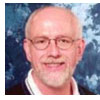Beware of MOOC’s: Weapons of Mass Instruction!
 A MOOC is a recent creation: Massive Online Open Course.
Even the definition of a MOOC is not yet agreed upon. One person’s MOOC
is another person’s garden-variety asynchronous online course. To me,
the thing that makes a MOOC a MOOC is (1) huge worldwide enrollment, (2)
for near-zero tuition and (3) yielding a certificate of competency when
a final exam is passed. By huge, we are talking north of 100,000
students in one MOOC! Such a game changer in enrollment and tuition
makes headlines, as did recent MOOC initiatives from Stanford University
(with its 100,000+ enrollment in “Introduction to Artificial Intelligence”), MIT (with MITx http://mitx.mit.edu/) and Harvard (collaborating with MIT, with EDx http://www.edxonline.org/).
And other universities are becoming MOOC’ers, too. Enrollment in one
MOOC eclipses total on-campus student enrollment. MOOC devotees want to
“…teach the World.” Some have called MOOCs “…networking on steroids.” Read more. A MOOC is a recent creation: Massive Online Open Course.
Even the definition of a MOOC is not yet agreed upon. One person’s MOOC
is another person’s garden-variety asynchronous online course. To me,
the thing that makes a MOOC a MOOC is (1) huge worldwide enrollment, (2)
for near-zero tuition and (3) yielding a certificate of competency when
a final exam is passed. By huge, we are talking north of 100,000
students in one MOOC! Such a game changer in enrollment and tuition
makes headlines, as did recent MOOC initiatives from Stanford University
(with its 100,000+ enrollment in “Introduction to Artificial Intelligence”), MIT (with MITx http://mitx.mit.edu/) and Harvard (collaborating with MIT, with EDx http://www.edxonline.org/).
And other universities are becoming MOOC’ers, too. Enrollment in one
MOOC eclipses total on-campus student enrollment. MOOC devotees want to
“…teach the World.” Some have called MOOCs “…networking on steroids.” Read more.
STEMx National Network Launched at U.S. News STEM Solutions Event
 What
does quality STEM teaching and learning look like? Where can teachers
find resources or great examples of classroom practice? How can families
or communities help raise student achievement in science? What
does quality STEM teaching and learning look like? Where can teachers
find resources or great examples of classroom practice? How can families
or communities help raise student achievement in science?
Battelle Memorial Institute and 13 state STEM education networks officially launched STEMx on June 27th at the U.S. News STEM Solutions Summit
in Dallas, Texas. STEMx is a multi-state initiative connecting state
networks and partners to accelerate the growth of policies, practices,
and partnerships that are needed to expand the number of STEM teachers,
increase student achievement in STEM education, and grow tomorrow’s
innovators. Read more. |
 |
A STEM Resource for Teachers
 Earlier
this year I wrote about the 6Rs of Informal Education and the wealth of
Resources (one of the 6Rs) that are available. This month I would like
to highlight one of the free resources that are available to educators
both in and out of classroom, Teachers TryScience. This website was developed as a partnership among The New York Hall of Science, teachengineering.org and IBM. The advisory committee had worldwide participation. Earlier
this year I wrote about the 6Rs of Informal Education and the wealth of
Resources (one of the 6Rs) that are available. This month I would like
to highlight one of the free resources that are available to educators
both in and out of classroom, Teachers TryScience. This website was developed as a partnership among The New York Hall of Science, teachengineering.org and IBM. The advisory committee had worldwide participation.
The site has as its
mission to support teacher instruction in project-based learning through
hands-on lessons integrated with multimedia and engineering as the
context in which to teach STEM topics connected to real world
experiences. An additional function beyond the lessons and teaching
strategies is its social networking tools for collaboration among
educators - more about that aspect later. Read more.
Preparing 21st Century Students for a Global Society: The Important Role of the Four C’s in Making this Happen
 A
policy maker walks into a school and says, “From this day forward we
oppose the teaching of Higher Order Thinking Skills including critical thinking
skills in all our state-funded schools.” “But, why?” asks a shocked
educator. “Because,” the policy maker declares, “They are simply a
relabeling of Outcome-Based Education which focuses on behavior
modification and have the purpose of challenging the student’s fixed
beliefs and undermining parental authority.” “And, that means?” asks the
bewildered teacher. “It means that we oppose the teaching of “higher
order thinking skills” like critical thinking because we believe that
the purpose is to challenge a student’s “fixed beliefs” and undermine
“parental authority.” “What the...?” ponders the teacher. Read more. A
policy maker walks into a school and says, “From this day forward we
oppose the teaching of Higher Order Thinking Skills including critical thinking
skills in all our state-funded schools.” “But, why?” asks a shocked
educator. “Because,” the policy maker declares, “They are simply a
relabeling of Outcome-Based Education which focuses on behavior
modification and have the purpose of challenging the student’s fixed
beliefs and undermining parental authority.” “And, that means?” asks the
bewildered teacher. “It means that we oppose the teaching of “higher
order thinking skills” like critical thinking because we believe that
the purpose is to challenge a student’s “fixed beliefs” and undermine
“parental authority.” “What the...?” ponders the teacher. Read more. |